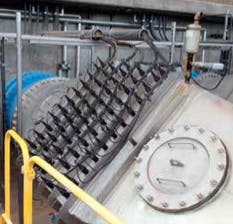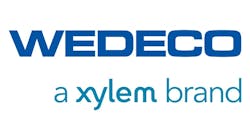Located north of Phoenix, Lake Pleasant Regional Park serves as a large outdoor recreational hub for Arizona residents. The lake itself, the second largest reservoir in Arizona, is a place where people boat and swim, and it serves as a water resource for the 400,000 households within the municipal boundaries of Peoria.
Background
Phoenix is one of the country’s fastest growing metropolitan areas and has an arid desert climate. Population growth coupled with increasingly stringent water regulations pushed the city to proactively address future water supply concerns. The decision was made to build the Lake Pleasant Water Treatment Plant (WTP) and include oxidation and disinfection treatment barriers.
Since surface water contains higher concentrations of constituents when compared with ground water, oxidation and disinfection were essential treatment steps to producing potable water. The equipment would be required to produce high-quality water at high volumes, but also minimize the environmental and economic impact.
Over 150 constituents are monitored in the raw water at Lake Pleasant, which is comprised of two water sources: the Colorado River via the Central Arizona Project Canal and the Agua Fria River.
The surface water of the lake was prone to taste and odor problems due to the presence of algae, decaying vegetation and other odor-causing organisms. Additionally, the threat of increased toxin levels because of the oxidation of blue-green algae also existed.
Solution
The Lake Pleasant WTP selected ozone technology to oxidize disinfection byproduct (DBP) precursors, geosmin, MIB and viruses; and UV technology for disinfection for Giardia and Cryptosporidium inactivation.
Black & Veatch and McCarthy teamed up as the design build team for the Lake Pleasant WTP expansion and were responsible for soliciting competitive bid proposals from ozone and UV manufacturers. To ensure that the most reliable and energy-efficient equipment was selected for the project, each manufacturer’s proposal was required to include information about the equipment technology and a detailed operation and maintenance analysis, which evaluated performance, power and consumables.
After examination of all bidding manufacturers’ proposals was completed, Wedeco was selected. The ozone generation equipment features two PDOevo 7000 units utilizing the Wedeco Effizon electrode technology. The ozone generation system is capable of treating up to 90 mgd of water from Lake Pleasant by producing over 1,800 ppd of ozone.
In addition to taste and odor removal, the ozone system also supplies the facility with added disinfection credits. Providing another layer of disinfection safety are four Wedeco K143 Series closed vessel UV reactors, each capable of disinfecting 27 mgd. The reactors are equipped with five rows of 12 low-pressure, high-output Ecoray UV lamps warranted for 14,000 hours of run time.
Results
As a result of utilizing Wedeco systems, the site experiences greater than 20% savings in annual energy costs without jeopardizing performance.
To date, Lake Pleasant WTP is able to control the taste and odor of the water while eliminating harmful bacteria and other substances utilizing ozone and UV treatment equipment. Wedeco technology has enabled the Lake Pleasant WTP to provide a reliable supply of high-quality drinking water that has been treated to meet the EPA’s strict Long Term 2 Enhanced Surface Water Treatment Rule and SDWA guidelines.



